Slow Bal is, like Balboa, a partner dance. So why would you dance it solo? That’s what we talk about in an interview with Olga Marina. We talk about why solo practice is a very good training for your partner dance, and different ways you can train yourself.
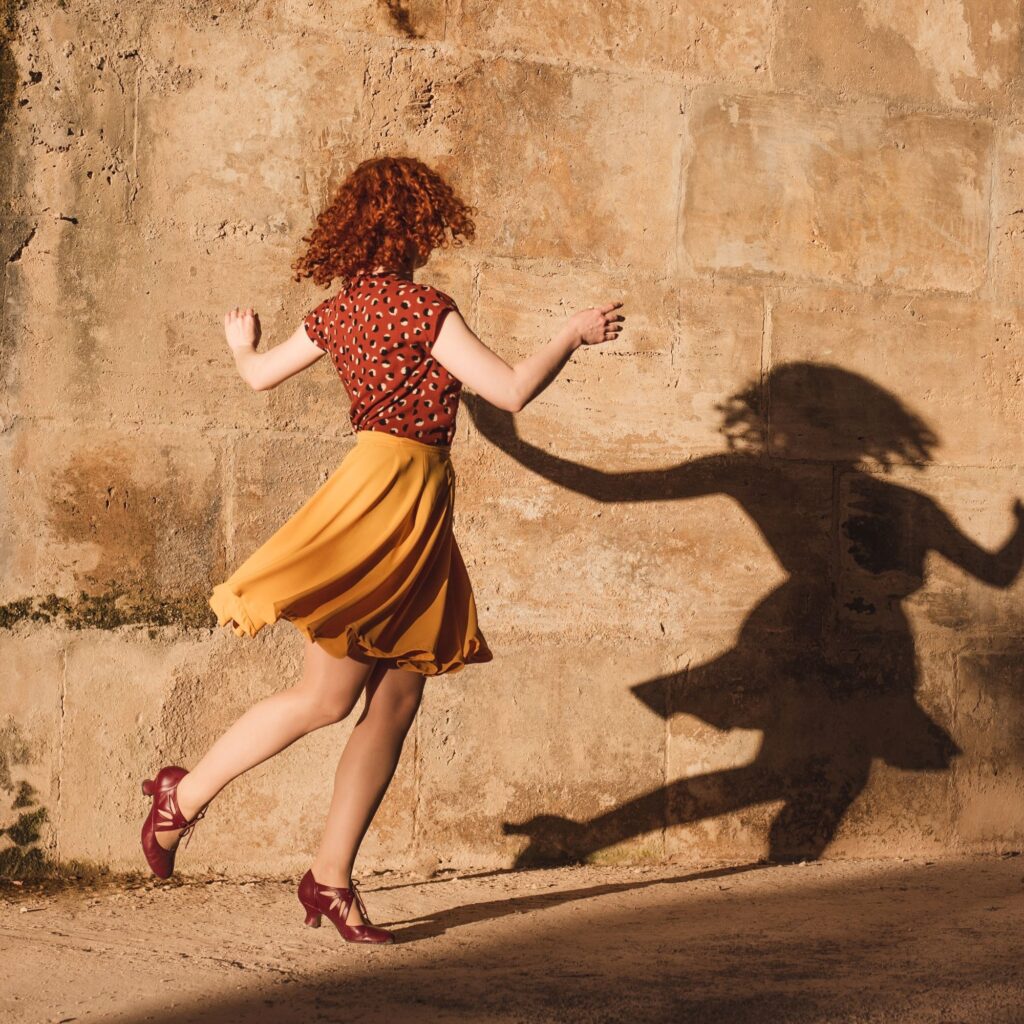
“It all started back in 2007, when I decided to try some dancing. I have always been interested in movement, being very active, did a little bit of martial arts and gymnastics back in university. But I have always wanted to dance, I just didn’t know what kind of dance I would like to try. I was working as an English language teacher and one of my colleagues showed me a video of Lindy Hop and invited me to come and try it out. That’s how I got hooked on Lindy Hop.
After a couple of years of dancing Lindy Hop, I had a one-year break. I was so busy with other things in my life that I quit dancing. But then I realised I actually do want to keep dancing. So, in 2009 I started again with Lindy Hop. I always compare myself to Picasso. Like he had his pink and blue periods, for me it was Lindy Hop and then Blues. I got really interested in Blues around 2010. That’s when I also started travelling more to blues events and did both solo and couple Blues.
My last dance passion was Balboa. It is quite interesting how it all started, because first it was just social dancing. But then one of the balboa dancers back in Moscow came up to me and asked: “Why don’t we compete in Balboa Division”. I never took any classes so I was unsure about it at first, but he was really convinced and said I was a good follower. So that’s how I started to get more into Balboa.”
“That started about the same time as I was doing some solo Balboa. The first time I tried it socially. Not until I moved to Sweden and started working together with Andreas Olsson, did I really dive into Slow Bal.”
“I’m sure it did. In Blues you really learn how to move slowly to the music, how to fill in the space. You have so much space which you can fill in with movement and play with different parts of the body. In Slow Bal you don’t play so much with the upper body or with the arms, but it definitely gave me some experience on how to move to slow tempos. “
“I always say that if you want to improve your rhythm and connection in Balboa, try Slow Balboa. You give yourself more time to figure out things or to work on small things, and then you can really excel later on in doing the same or similar things to faster music. So, dancing Slow Bal is highly recommended to everybody. Do try Slow Balboa, you will love it! Slow Swing music is also Swing, but it has a slightly different character. It’s also very nice to be able to dance to this music.”
Deirdre: “I’ve noticed that some Balboa dancers struggle with filling in those notes, because with the quick tempo we’re used to continuing moving at a faster pace, obviously. So, when they dance Slow Bal, there is a rush in the dancing. For me it’s really nice to see during weekends and workshops that the rush is slowly getting out of their bodies and they’re taking the time to finish moves and really do the move completely.”
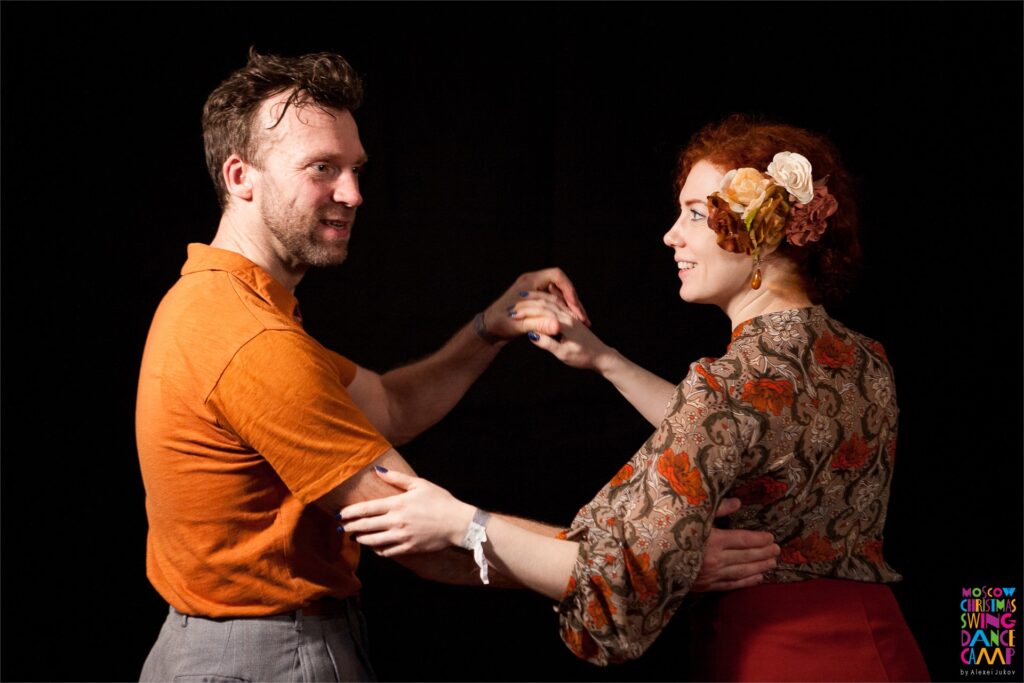
“I started for very personal reasons, maybe even a bit egoistic, but I wanted to improve my own dancing. And one way to do that is to dance solo. It started when I was still living in Moscow. Back then I had a dance partner and competition Balboa partner, Sergey Petrov, and we were really committed to practicing on a regular basis. But I had already started travelling a lot because of Swing festivals and because of my work. We couldn’t practice regularly, so we decided to fix this by agreeing to practice solo. He was practicing in his place. I was practicing at my home and then we would film it and share the videos to look at each other, to encourage each other and to feed off each other’s ideas and to develop our own dancing.
We started a Facebook group to share our videos, with just the two of us in it. There we also shared other videos that we liked. And then once by mistake, I posted one of my practice videos to my page rather than to this group. So, it was seen by everybody on Facebook. And before I realized what happened, people started asking questions, asking me what I was doing. I was horrified and deleted the video. But it was already seen and people knew now that I was training solo. So, they asked me if I would like to teach, maybe start with a solo taster class. And that is how it all started.”
“Yes, I was like, why not share? And I thought it was going to be a one time thing. And then I noticed how much interest there was. Not only from followers, for whom I originally did the taster, but also from leaders. So I understood the interest and the necessity to do it for everybody. Just after the first taster, people said they loved it and asked for more. And so little by little I started doing regular classes for both leaders and followers, all solo.”
“Yes, although I think that secretly all the advanced dancers are practicing with a fridge in the kitchen or when they brush their teeth. If you want to progress, you have to practice certain elements by yourself. So I’m sure that a lot of people did it even before I started.”
“Well, not when I brush my teeth, to be honest. But especially when I just started with the solo classes, ideas could pop into my mind everywhere. When I was walking in the streets or waiting for the bus, ideas would pop up, like ‘what if I take this element and try it here’. And I would try it out immediately, on the spot.”
“Because when you practice solo, it gives you more time to bring focus to your own body. Body awareness is the big reason why. If you really want to improve, if you really want to become an advanced dancer, you should practice solo. No matter if you do Lindy Hop, Blues or Balboa. It’s because it gives you time to really think and feel how your body moves or also what your body looks like. Really analyse yourself, film yourself. And then, like I always say, keep the things you like and change the things you don’t like.
Of course, you can also look at yourself when you dance as a couple. But you have to think about so many other things when you dance together, like connection and leading, phrasing and musicality. Practicing solo is a good way to really separate certain things and practice little elements, certain figures or stylings separately. Get it into your body before you do it together.
So solo practice is really good to create more body awareness and train automatic body reactions before you get distracted by other things in partner dancing.”
“Well, a lot of things. Maybe not everything, because for a connection, you still need somebody. I mean, you can always take a pillow and then feel it on your body, think about the angle and where you want to connect. But sometimes you do need a human being, so that you can also get some feedback. Because the pillow cannot talk. But you can ask a person, how was that? Is there anything that can be changed? Was it comfortable? Can we try it? And if I do this, does it feel better? In this sense, it’s also important to practice in a couple because in the end it is a couple dance.
So, can you practice everything solo? I’d say yes, mostly, apart from some variations. You can practice posture, you can practice turning technique, you can practice pure Balboa and Bal Swing figures.”
“Yes, filming really helps because sometimes we think we do certain things, but when you film yourself you see that you are not actually doing it. And also, especially if you like to practice different footwork, it’s good to film yourself from different angles. Sometimes in couple dancing you cannot see it from the right angle or you are not close enough. Practise solo and film from different angles, sometimes just the feet or the legs. It will help you to see what is really happening.”
Deirdre: “I film myself a lot. And there’s always a big difference for me in how it feels and how it looks. It can be like two completely different things. I feel like I’m dancing in such a tiny and subtle way and then I look at the video and it’s like huge and big steps.”
“You’re so right. The way it looks from the outside world and how you feel it, are two completely different things. And it’s good to remind yourself about this and try to put the visual picture onto the feeling and to synchronize these two things. It’s all a part of body awareness.”
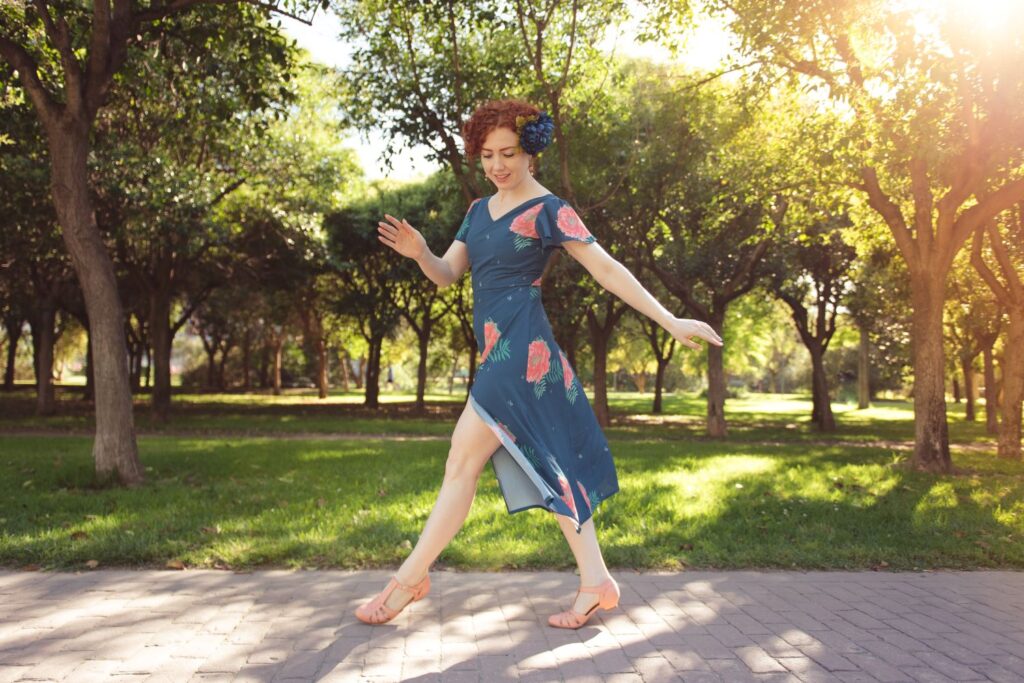
“You can practise things like your posture, finding relaxation in your upper body, but also footwork variations that we do in Slow Bal. Finding your own voice, your own styling, is also something that you can start exploring solo. Film yourself, watch yourself and how your body moves. Keep the things you like visually. And explore the options you have with a certain movement. First try everything solo and then little by little try it with a partner.”
“One more thing that definitely can be practiced solo is the flow, this continuity of the movement. Of course, you can also train this with your partner, but you have so many other things to focus on when you do it together. In your solo practice you can really explore how you can continue the momentum, how it flows from one part of the body to another. How we can slow down the movement, like, when you move just a little bit but you are still moving. Then feel it in your body. You teach yourself to always move on to the next shape with continuity.
Put on the music, dance the full song and make sure that you don’t really stop moving. Even in slow steps, keep moving. In your weight changes, keep moving. Even if you’re not changing weight or transferring more weight from one foot to another, how you can still show that the dance is continuing by moving some other parts of the body. Maybe a little bit of the shoulder, your torso, the hand connection or even in the head. You can have the flow without stepping.”
“One exercise is to try to move with your eyes closed. Of course, one needs to make sure that the space is safe, not too many chairs or angular pieces of furniture in the room. But I think this is a very good exercise for balance, because you feel your body in a different way. You don’t actually need to move a lot; you can just have a small space and just try to move a little bit with the eyes closed. It will teach you more about balance and how you distribute your weight. You feel if you have your weight on one foot or the other and on what part of the foot, you can feel it in your stabiliser muscles in your core.”
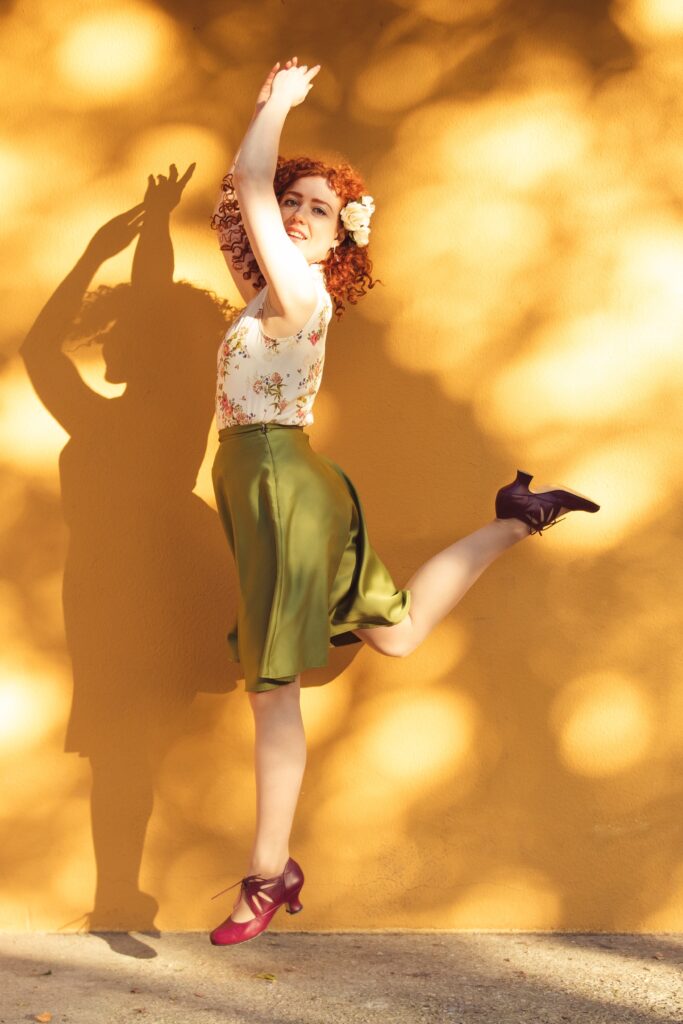
“You can use a door handle, but the downside is that a door doesn’t stretch. You then only practice the stretch on your own side. What I’m thinking is that you could use any stretchy material, like a scarf or a piece of rubber band or something else that can imitate the connection with a human being. Because on their side there is also a stretch.”
“I filmed videos and I grouped them in different topics. For example, you have a topic on triples, turns and slides. You can get access to everything; this is what most of the people do. So they buy a subscription for one month or six months or twelve months and they get access to all the videos. You can choose yourself in what order you want to try these videos.
I also offer a little help and coaching. This is included in a six month and a twelve-month plan. I call it PPP: personalized practice plan. What I ask people to do is to send a video of them dancing, so I can watch them. Then we usually meet in Zoom and talk about what they can work on and how they can practice this. Once they got their practice plan and they practice for a couple of months, we can meet again in zoom or in person. Because I travel so much, we often find a moment to meet and we schedule a private lesson, which is included in the subscription.”
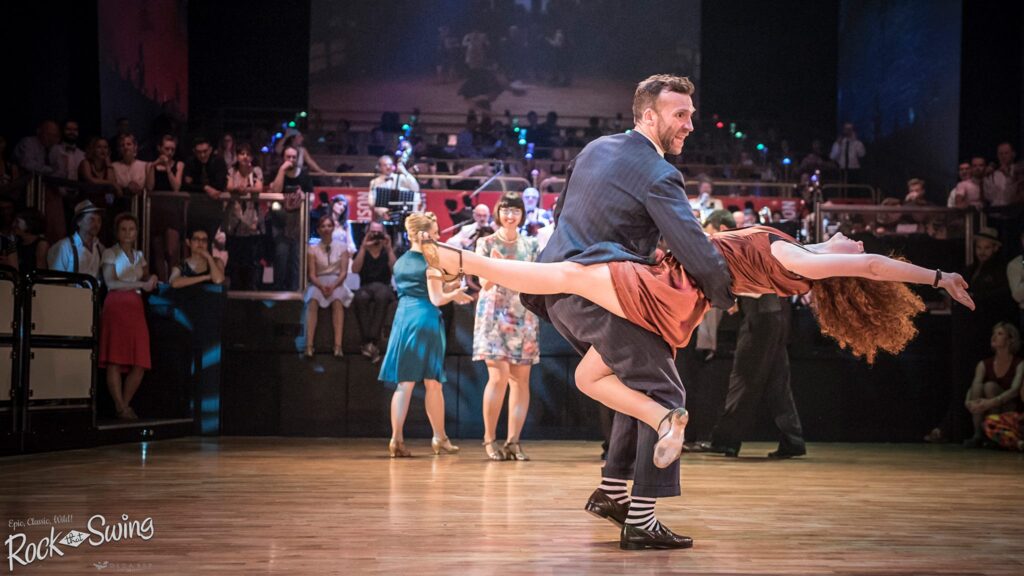
“That is a good question. At the moment I’m in a slightly passive stage with my project. At the beginning I was very enthusiastic and I put up a lot of videos. At the start of the pandemic, I ran some marathons (=series of themed online classes). And I burned myself out a little bit with this. I remember I spent so much time in the studio, basically sleeping there because I wanted to film more and more. I think I overdid it a little bit. It didn’t do good for me and I lost a little bit of the passion and enthusiasm about it.
I still have a lot of ideas that are meticulously written down in an Excel document. I’m a very systematic person and I need to write everything in tables and create systems because this makes it easy for me to store the ideas.
There are also some ideas that I have filmed, but not edited yet. Sometimes students ask me about new videos, but the truth is that in the last year it was hard for me to encourage myself to put my foot down and just do it. So maybe this interview will help me to reignite my interest and enthusiasm. Just because I remember how passionate and enthusiastic I was and also how helpful the project was for other people. Especially in the beginning, people wrote to me a lot in emails and personal messages on Facebook and it was really great to hear feedback. Unfortunately on the platform, apart from those Zoom lessons, you don’t really get a chance to communicate with people. So it was very nice when people actually came back to me and said that they enjoyed it.
To sum up: I do want to add more videos and to put up more courses. I did an Old Timers course part 1 and I promised to do part 2, but I never got a chance to do it. So that could be a future project. Or maybe make a course for practicing Slow Bal solo. Yes, I like to give life to my ideas.“
“Do practice solo. Everyone. It’s so important. And it’s so much fun as well. For me it was a big time of creativity and inspiration. A fountain of creativity!”